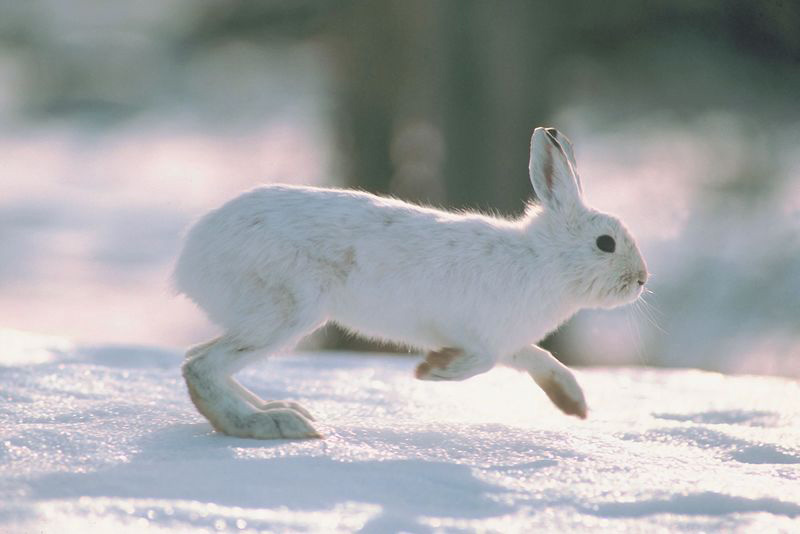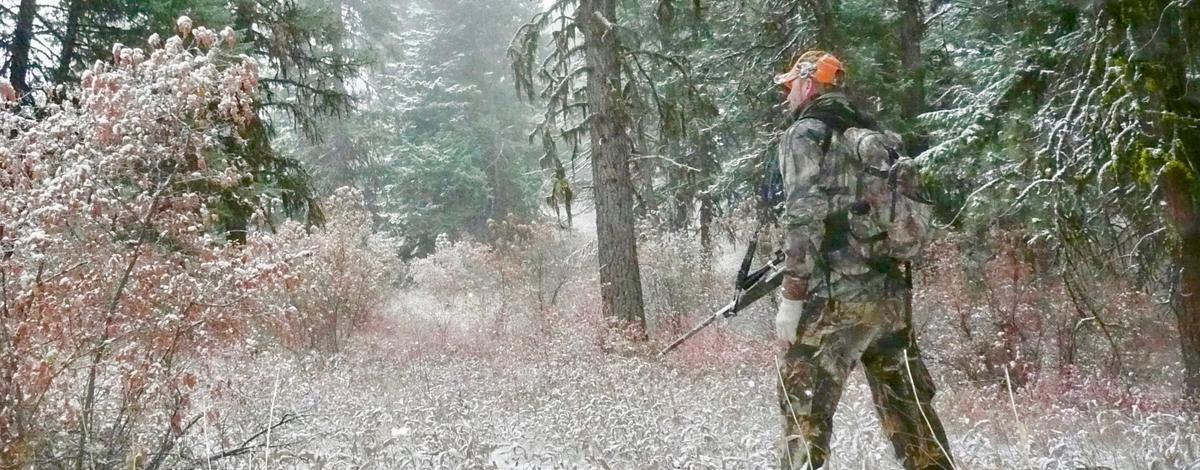Small game hunting through winter is a great way for hunters young and old to develop their skills and confidence without breaking the bank. You don’t need specialized or expensive gear to hunt them, just a .22 long rifle and/or any shotgun, warm clothes and boots suitable for hiking. The skills learned while small game hunting – including tracking, handling a firearm, field dressing and cooking the animals you harvest – harken back to the early days of the sport and later translate directly to big game hunting.
In particular, learning to process and clean small game helps new hunters understand the basics of field dressing before they move to larger game. Seeing the woodlands blanketed in snow and pocked with fresh game tracks is like following a treasure map, and instilling in these young minds the habits and patterns of various small game species is a great way to connect youth hunters to the land, animals and hunting.
Here are three of the most commonly found (and exciting) small game species to hunt this winter.

Red Squirrels
- Season dates: Aug. 30 - March 31
- Bag limit: Eight per day
- Equipment essentials: Small-caliber hunting rifle, air rifle or shotgun; hiking clothes and boots
- License requirements: Small game or annual hunting license
They’ve been barking at you all fall. You’re tip-toeing into bull elk country when all of a sudden a Douglas fir starts chirping excitedly at your unwelcomed arrival. The resident red squirrel living on the fifth floor of that lodgepole pine is the newest small game animal to be added to the winter hunting season regulationss and provides both veteran and rookie hunters an excellent opportunity to extend their hunting season.
Red or pine squirrels – not to be confused with their larger cousins, fox squirrels, which are also reddish in color – are native to Idaho and have a wide distribution. As most big game hunters will attest, they are active during the day, stockpiling seeds, conifer cones, nuts and fruits before winter snow buries the forest floor. Because of their diet (we are what we eat), red squirrels have an earthy, almost nutty flavor. Pun intended.
If you’re lucky enough to bag a couple of red squirrels this winter, try any number of crockpot recipes. Squirrels can be lean and tough, and are best broken down slow-cooker style as a hearty addition for soups, stews or tacos, or sautéed in butter and herbs.

Forest Grouse
- Season Dates: Aug. 30 - Dec. 31
- Bag limit: Four in the aggregate per day
- Equipment essentials: Small-caliber hunting rifle or shotgun; hiking clothes and boots; upland hunting vest
- Licensing requirements: Small game or annual hunting license
Forest grouse are crafty, clever mid-sized birds that inhabit much of the state’s forests. Commonly found on public lands, they provide a hunting opportunity for nearly anyone. There are three species of forest grouse in Idaho, all of which are native to the state: the dusky (blue), ruffed, and spruce grouse.
Grouse have an uncanny knack for bursting out of a tree roost when a hunter comes too close, often times giving the hunter a near heart attack; however, these birds will sometimes ignore humans altogether as you creep in for a close shot. Depending on your preference, you can either attempt to shoot flushing grouse on the wing with a shotgun, or stationary grouse in the trees with a small-caliber rifle.
An important reminder that grouse hunters need to leave one wing attached to the carcass during transport. Once plucked, de-winged and ready to process, hunters can serve up the breast and thighs a number of ways, including sautéed in butter and thyme in a skillet, or dusted in flour and deep-fried.

Cottontail/Snowshoe Hares
- Season dates: Aug. 30 - March 31
- Bag limit: Eight per day
- Equipment essentials: Small-caliber hunting rifle or shotgun; (warm) hiking clothes and boots
- Licensing requirements: Small game or annual hunting license
Few hunting experiences rival winter rabbit and snowshoe hare hunting. The trees are stripped bare, the air is crisp and silent and scattered across a carpet of snow are the frantic tracks of cottontails and hares. Hunting for these species in the dead of winter is an incredible way to introduce youth hunters to the sport. Sure, it’s 25 degrees and the thermos of hot chocolate back at the truck sounds pretty darn nice, but following the tracks and habits of wintering small game species is a fun way to get family and friends outdoors.
Seeking out rabbits and hares can also be an inexpensive way to introduce youth to hunting and field dressing. This time of year, you’ll need to have a sharp eye as rabbits and hares are notoriously nimble, often found in thick brush, thorn bushes, and fallen pine boughs. One option is for hunters to find a high point overlooking a relatively clear area and hunt with a scoped, small-caliber rifle, keeping an eye on openings near cover. Another is for hunters to attempt to flush out rabbits by walking through areas of dense cover, and to harvest them on the run using a shotgun. If using the latter approach, it's not a bad idea to hunt with a friend or two, which will help you cover more territory and potentially flush more rabbits. A dog may also count as a friend.
If you or your budding hunter are quick enough to bag one this winter, you’ll find that rabbits and hares are among the easiest to skin in the field. After removing the feet at the ankle knuckle, make a small incision up the back of each hind leg. Pull the skin of each leg towards its pelvis, then continue pulling the hide towards the head down the midsection, as if you were taking its sweater off. Once cleaned and quartered, rabbits can make an excellent addition to stews and roasts or deep-fried.
Whether you’re new to hunting or a long-time veteran, hunting for small game can be an exciting way to keep your marksmanship sharp and your freezer full during the winter. Remember: Hunters will need a 2022 hunting license beginning on Jan. 1. For more information on upland and small game seasons and regulations, check out the Fish and Game Upland Game, Turkey & Furbearer Seasons and Rules brochure available online or at authorized licensed vendors.

